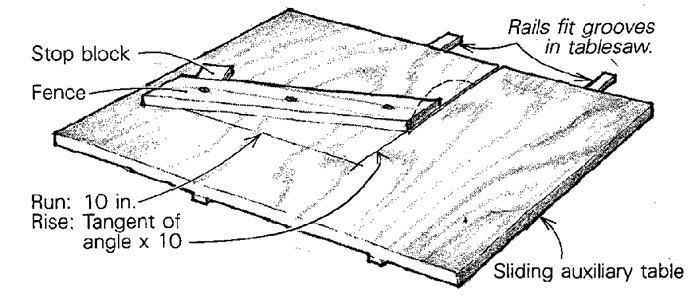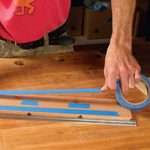Trig Jig for Accurate Angles

With this simple jig and a little trigonometry, you can cut odd angles on the tablesaw more accurately than with the saw’s miter gauge. First, construct a sliding table using two maple rails and a piece of 3/4-in. plywood. To ensure perfect alignment, lay the rails in the saw’s grooves and tack the plywood to them temporarily, then flop the plywood over and screw the rails down. Next, raise the sawblade and cut about halfway across the jig.
Trigonometry provides an easy and accurate method for laying out the angled fence. Find the tangent of the desired angle from a trigonometry table or with a pocket scientific calculator. The tangent gives you the ratio of the angle’s vertical rise to its horizontal run. If your angle is 11.25¡, for example, the tangent is 0.19891 (rounded to 0.2). Therefore, for each inch of horizontal run, the vertical rise is 0.2 in. To make layout easier, scale up the measurements by multiplying by 10. This results in a base horizontal line of 10 in. and a vertical rise of 2 in. Mark these measurements on the jig as shown in the sketch and draw a line between the two points to locate the fence.
Eric Schramm, Los Gatos, Calif.
Fine Woodworking Magazine, February 1984 No. 44

Fine Woodworking Recommended Products

Double Sided Tape

Stanley Powerlock 16-ft. tape measure

3M Blue Tape






















Log in or create an account to post a comment.
Sign up Log in